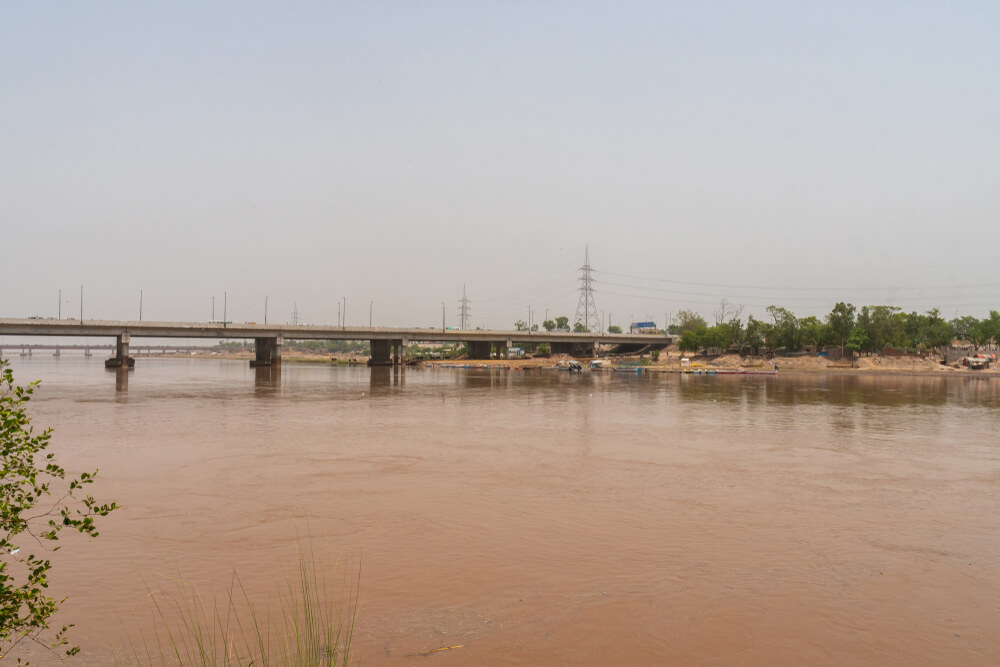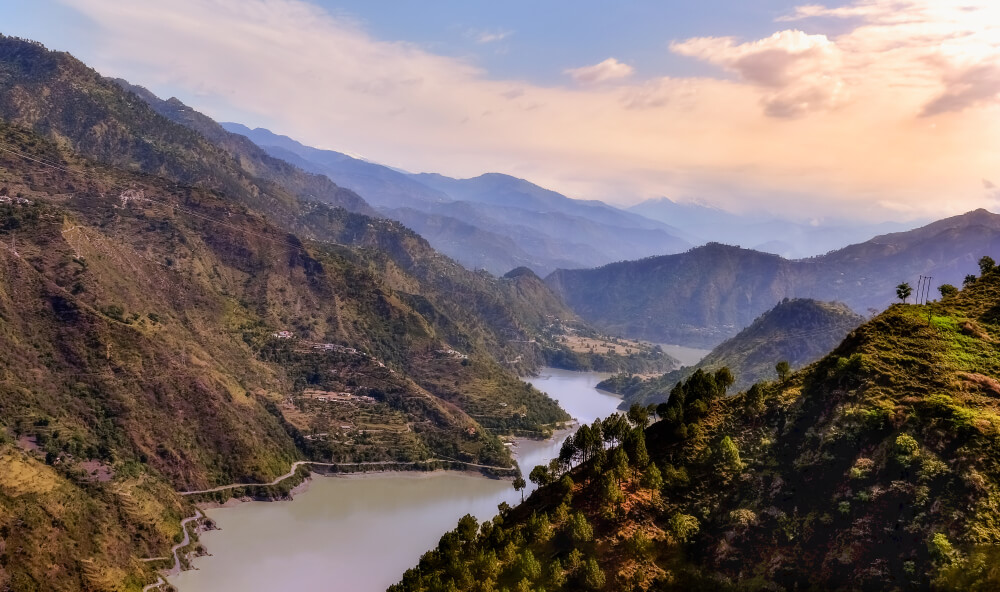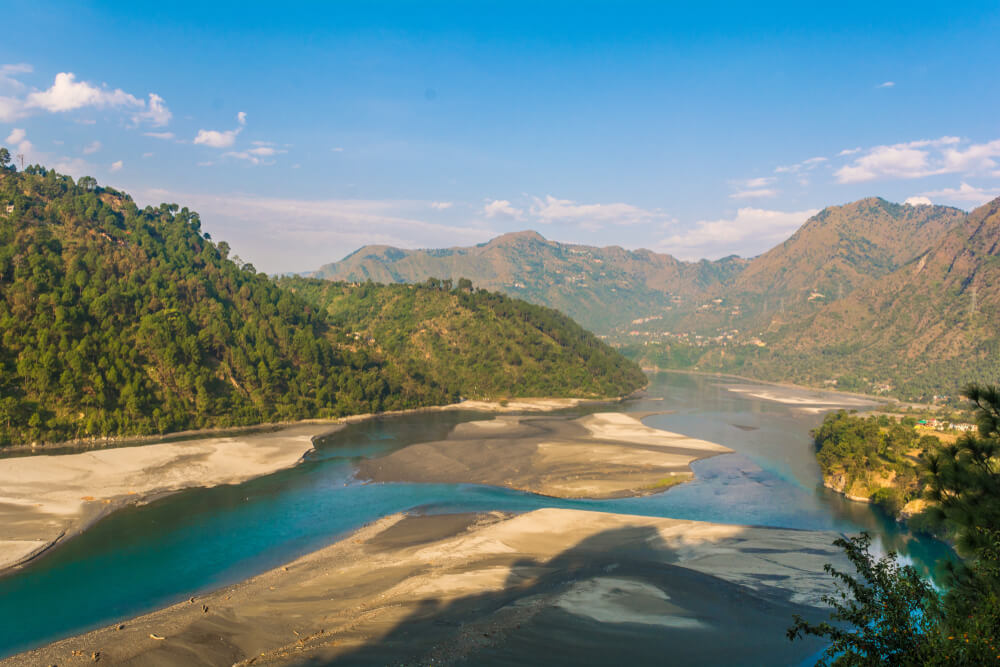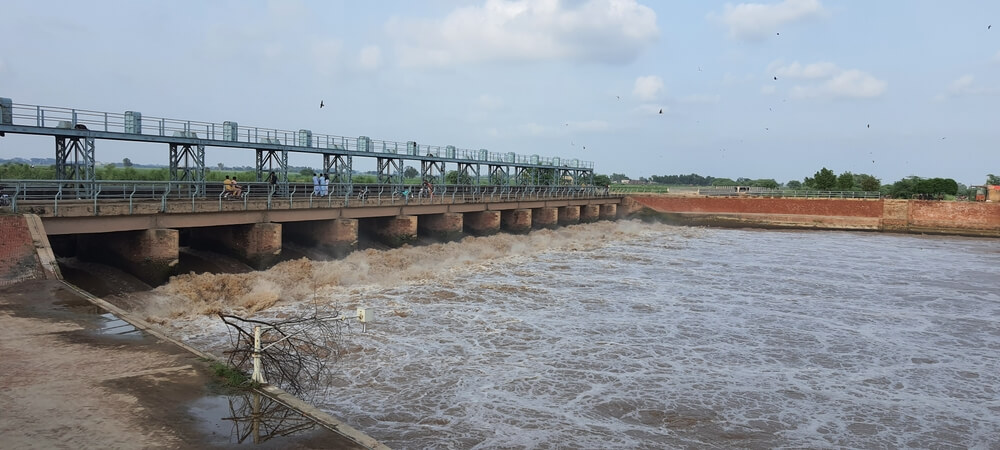Ravi River
The River Ravi is a transboundary river crossing northwest India and Pakistan. It is one of the five rivers linked with the Punjab region. The Ravi River and other rivers were assigned to India under the Indus Water Treaty of 1960. Later on, the Indus Basin Project progressed in Pakistan, which moved water from the western River of the Indus system to fill up the part of the Ravi River existing in that country. It is one of the most crucial rivers in Pakistan.
River Ravi Location
The river appears in the Himalayas in Himachal Pradesh state, India, and moves west-northwest past Chamba, curving southwest at the border of Jammu and Kashmir union state. The river then moves toward the Pakistani border and along it for more than 50 miles ( 80 km ) before reaching the Punjab province of Pakistan.
History
According to ancient history, discovered in Vedas, the River Ravi was named Iravati. The Ravi was Known as Purushni or Irawati to Indians in Vedic times and as Hydraotes to the Ancient Greeks.

Geography
The River, a transboundary river between India and Pakistan, is an essential part of the Indus River Basin and forms the source of the Indus Basin. TherRiver water evacuates into the Arabian Sea ( Indian Ocean) through the Indus River in Pakistan. The river appears in the Bara Bhangal, Kangra District in Himachal Pradesh.
Water Level of River Ravi
The River Ravi has flood discharges in surplus of 600,000 cubic feet ( 17,000 Cubic meters) per second in the summer monsoon season. The river’s flow is considerably less in winter, jointly with the suspended residue load. The river’s water irrigates vast areas of land along its path.
Tributaries of the Ravi River
One of the main tributaries of the River Ravi is River Budhil in India. The Length of this tributary is 45 miles. The Budhil River moves through the Himachal state of Bharmour and merges with the the river. Another major tributary is River Nai which arises from the glaciers at the Kali Debi Pass and meets the Ravi River at Trilokinath.
Future Program on Ravi River
The Ravi River aids millions of urban and Rural people in Punjab. Still, it is 400 % below the minor quality to assist marine life and produce high water-borne disease possibilities. This strategic plan provides a realistic nature-based solution to enlarge the river’s social, economic, and ecological benefits. Application of the plan would save a natural capital value of $ 8 billion to $ 18 billion, a far more significant investment and operating cost. The Technical assistance aimed to fortify, strengthen and construct elasticity in the River Ravi Basin in Punjab Province, Pakistan, through better environmental water management. The purpose of Technical assistance is to manage the pollution disaster by boosting monitoring and enforcement capabilities, filling authoritative and institutional gaps, upraising awareness of pollution risk and benefit-cost analysis to decrease pollution, and raising investment level and policy of the public towards the crisis and downfall.

International Water Treaty
In the International Water sharing Treaty of 1960 under the World Bank, three rivers were allotted to India for water utilization as India had already developed rivers before the treaty. Beas, Sutlej, and Jhelum are the three rivers assigned to India, while another river, including Jhelum and Chenab, was allotted to Pakistan for their utilization. This treaty was entitled the International Water Sharing Treaty, but it proceeded in the division of the rivers rather than the sharing of water of all rivers to both countries.
Interstate Water Dispute
Inter-State Water Dispute emerges when there is a clash between two or more states on the utilization, distribution, and management of the water flow in two or more states. When the concerned states cannot sort out issues through negotiation, the Central Government forms a water dispute tribunal to fix the water dispute.
The Interstate River Water Dispute Act of 1956 (IRWD Act) is an Act of the Parliament of India approved under Article 262 of the constitution of India on the eve of reforming of states on a linguistic basis to sort out the disputes regarding water that would appear in use, manage and distribution of the interstate river or river valley.
River Ravi Commission
Green Bench, Lahore High Court formed a River Ravi Commission ( RRC ) in 2012 to give suggestions and advice to enhance and boost the ecology of River Ravi and suggest some indigenous technology to reduce the contamination in the wastewater entering the River Ravi constantly. The RRC made a sub-committee to assess and estimate two ongoing wastewater treatment approaches at Islamabad and Faisalabad. The purpose of the River Ravi Commission was to propose an ongoing strategy to maintain the river’s natural ecology.
The objective of the River Ravi Commission
- To present a sewage discharge reduction plan
- Bio-Engineering solution regarding ecosystem restoration
- Financial policy and Techniques
- Bio-remediation is the use of microorganisms, metabolism, plants, and enzymes to detoxify contaminants from water.
- Idea from built wetland at National Agriculture Research Centre, Islamabad.
- Pilot Projects are presented over 50 acres of land for 10 Cusec of wastewater. The government acknowledged arranging Rs. Fifty million to pay for the pilot project cost.
- Operating Expenses of the Commission have to be borne by WWF-Pakistan.
Efforts by the Government
The Lahore High Court administered the Punjab Government to clean Ravi from contaminated material and toxic waste of industries. Justice Shah directed the chief secretary to issue funds to accomplish the project and propose a compliance report at the next hearing.

Ravi commission Secretary Advocate Rafay Alam advised the court that waste material of industries had transformed the river into drains. Further, he said that government is unable to prepare PC-I for the water treatment project. A sum of Rs 30 million was needed for a short-term project to clean the water of River Ravi. The construction of seven treatment plants under the River Ravi project needed Rs 3 billion, a long-term project, but the government is advised to go for short-term projects to save money and time.
Pollution of Ravi River Water
The River Ravi is the most polluted river in the world. Environmentalist Afia Salam stated that River Ravi had been turned into a sewer ( Drain) with human and industrial waste. She said that laws had been made about discarding wastewater and waste from industries, but no laws, rules, or regulation is being executed in the country. Further, she said if the government could maintain waste disposal laws, it would improve in-ground and river water. According to an Asian Development Bank report on the River Ravi revival plan, the condition of River Ravi and its nullah is a severe warning to the health of residents of the basin. Widespread taint and contamination mean aquatic and marine diseases are common across all age ranges. If no action is taken, the spread of the disease will get into worst conditions.
Tourist spots on River Ravi
Below is the detail of tourist spots on River Ravi.
Akbari Sarai
The Akbari Sarai is a large caravan in Shahdara Bagh in Lahore, Punjab, Pakistan. Sarai was constructed for travelers in 1637 and custodians and guards of the Tomb of Jahangir. The Akbari Sarai is the most remarkable and noteworthy for being the best-preserved example in Pakistan.
Tomb of Jahangir
The Tomb of Jahangir is a 17th Century mausoleum constructed for the Mughal Emperor Jahangir. This tomb was constructed in 1637 and is situated in Shahdara Bagh near Lahore city, Pakistan, along the River Ravi bank. This tomb is famous for its structure; its interior and exterior sites are beautifully constructed.
Tomb of Asif Khan
This tomb was constructed in the 17th century in Shahdrah Bagh in Lahore city, Punjab, Pakistan. It was constructed for Mughal statesman Mirza Abdul Hassan Jah, entitled Asif Khan. Asif Khan was the brother of Nur Jahan and brother in Law of Mughal emperor Jahangir. The tomb of Asif khan is adjacent to the Tomb of Jahangir.

Kamran’s Baradari
It is a summer pavilion located in Lahore, Pakistan. It was constructed in 1540 by Kamran Mirza, the first son of Mughal emperor Babar and brother of the second Mughal Humayun. It is the only garden in Shahdara Bagh, Lahore, that has not been converted into a funerary or memorial monument.
Head Balloki
Head Balloki is the barrage on the Ravi River in Punjab, Pakistan. It is 70 km far from Lahore. It was built in 1915 in British India as a part of the Triple Canal Project to nourish the Lower Bari Doab Canal. The actual barrier has now been reconstructed as a whole barrage.
Interesting Facts about Ravi River
River Ravi is one of the five main tributaries of the Indus and is located in Pakistan and India.
- The Ravi was called Parushani or Irvati to Indians in Vedic Times and Hydrates to the Ancient Greeks
- It appears in the Himalayas in the Chamba district of Himachal Pradesh, ensuing a northwest course. It curves to the southwest, close to Dalhousie, and then cuts a ravine in the Dhaola Dhar Range, entering the Punjab plains close to Madhopur; it then moves along the Indo-Pak boundary for a little span before entering Pakistan and merging with the Chenab River.
- The Length of River Ravi is about 720 km.
- Under Indus Water Treaty between India and Pakistan, the water of River Ravi is allotted to India, which proceeds to Indus Basin Project. As the great city of Lahore is situated on the eastern bank of River Ravi, it is also known as “The River of Lahore. ” The famous town of Shahdara, where tombs of Jahangir and Nur Jahan exist, is located on the western side of River Ravi.
- The River Ravi is nourished mainly by the melting snow and rain.
- The River Ravi is the minor river among all five rivers that flow in Punjab.
FAQs
Where does the Ravi River start and end?
It originates in the Himalayas in the Himachal Pradesh state and passes west-northwest Past Chamba, curving southwest at the border of the Jammu and Kashmir Union region. The River then moves to the Pakistani border and another 50 miles ( 80 km ) along it before entering Pakistan’s Punjab Province. The river then moves to the border of Pakistan and along it for more than 80 km before entering Pakistan’s Punjab Province.
From which pass the Ravi river originates?
River Ravi originates from the northern face of Rohtang Pass in Himachal Pradesh.
Which dam is located on the Ravi River?
Ranjit Sagar Dam is a hydroelectric project built on River Ravi. It is divided into Punjab and Jammu Kashmir. The height of this dam is 160 m, and it is used for irrigation and producing electricity.
Conclusion
The River Ravi is significant in India and Pakistan as it is a transboundary river between them. The water of the river is utilized for irrigation purposes in both countries as it supports vegetation on its bank. Many dams and Hydroelectric are operational on the River Ravi, which satisfies the demand for agriculture and electricity. Many beautiful places built on the River Ravi help to enhance tourism. India and Pakistan allocated the water of the river under Indus Water Treaty agreed on 19 September 1960 between the two countries. River Ravi’s water worsens daily due to industrial waste discharge from India and Pakistan. Many environmentalists have threatened that marine and aquatic life is in danger.
